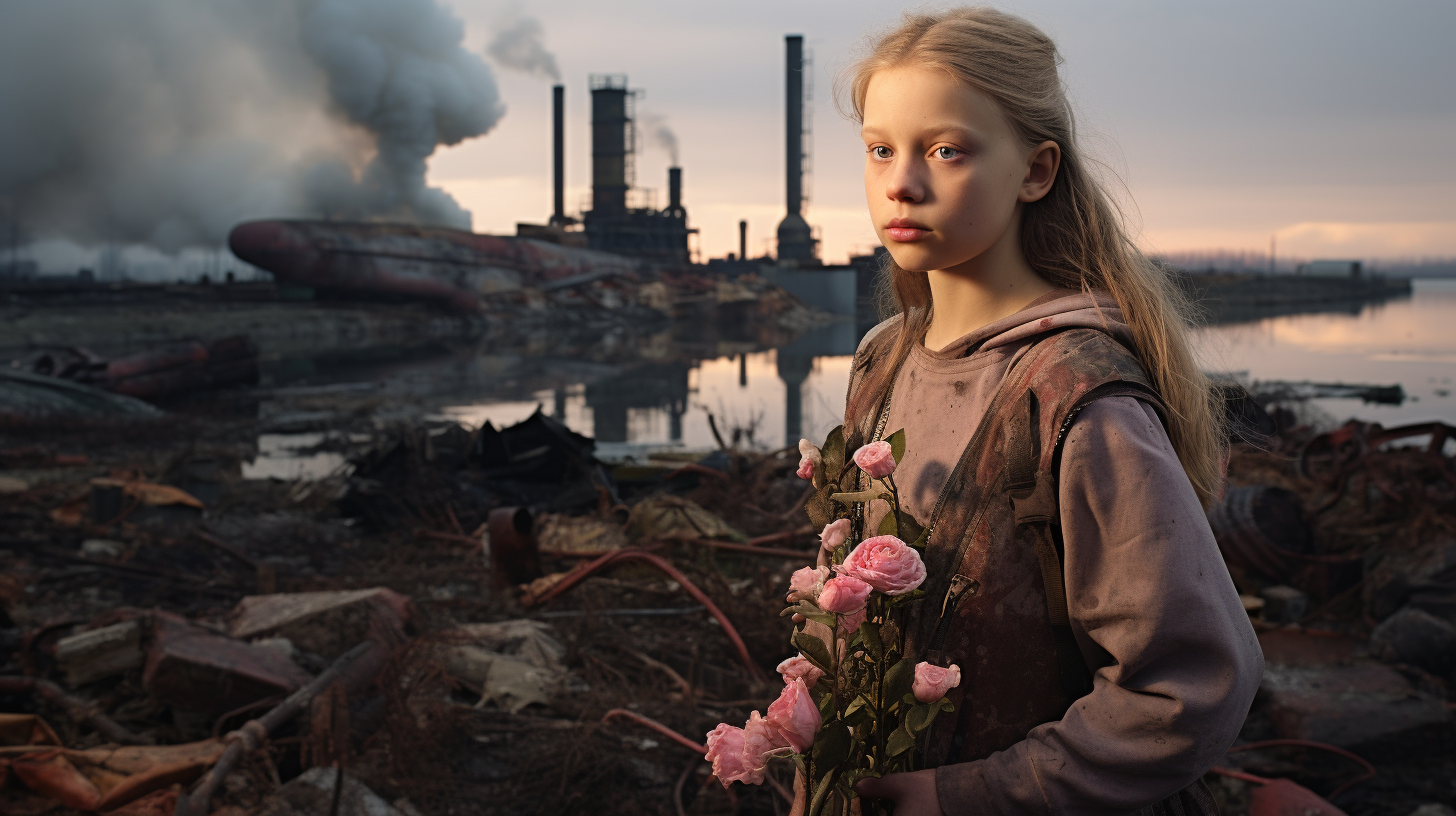In the ashen silence of what was once the emerald lung of our world, a solitary tree stands – a solemn witness to the collapse of a once-vibrant biosphere. The scorched earth crumbles beneath its roots, the air carries the haunt of desolation, and the sky is an ever-gray canvas, all painting the scene of ‘Flora’s Final Stand’.
Survival has become a solitary pursuit amidst mass environmental exodus, reckoning with the withered visages of flora and fauna that lay scattered as forewarnings. After the relentless waves of man-made plagues – deforestation, pollution, climate catastrophes – our natural world is stripped bare, holding onto life by a threadbare promise.
This isn’t a fiction extracted from the pages of eco-centric horror but the stark narrative weaved into the very essence of our existence. We have beckoned an era of desolation, where green canopies are now relics of the past, and the hope of photosynthetic resurrection is a naive whisper in the winds of an unyielding dust bowl.
In our previous exploration – ‘Scorched Horizons’ – we delved into the abyss of what used to be pastoral abundance. The follow-up to this bleak reality takes us deep into the heart of the remnants of our floral heritage. One tree, perhaps the last of its kind, stands defiant in the face of oblivion. Its branches stretch out like gnarled fingers, grasping at the memory of a sky that once rained mercy instead of acid.
Biologists suggest this flora survivor – a miracle unto itself – may hold untold genetic secrets to resistance. Yet, in our dystopia, it feels more like a monument to lost opportunity, an ecological ark that arrived too late, to a rescue party that never was.
As we circle the tree and detail its struggle, humanity’s reflection becomes laceratingly clear – through hubris and neglect, we have authored our own demise. We live in the shadow of this lone flora, its endurance a mocking echo of our potential to harmonize with nature, now squandered.
Tales of verdancy and vigor seem like ancient myth now, as we trudge through the remains of once rustling forests. Imagine an era where mother nature’s offspring buzzed with life, an orchestra of biodiversity in its grand performance – we find ourselves starved of such sustenance.
Where there were once whispers of reforestation and rehabilitation, there is now only the hush of extinction. Botanists, who might have cultivated regrowth, walk the silent job of archivists, cataloging what’s left for a record, not a resurgence. The final stand of flora is not a battleground, but a graveyard watch over a civilization too blind to see its heart flatlined.
Yet, in this narrative of decay, we don’t just chronicle the fall – we immortalize the warning it serves. The unsung eulogy of our environment, spoken in the language of wilting petals and parched earth, may not resurrect the lost, but it ignites a haunting inquiry – what of tomorrow?
In the end, our solitary tree may not witness a great revival, but perhaps, in its perseverance, inspires a quieter revolution – one of reflection, recognition, and the dire need for change, if not in this world, then in the narratives penned for tomorrow.
